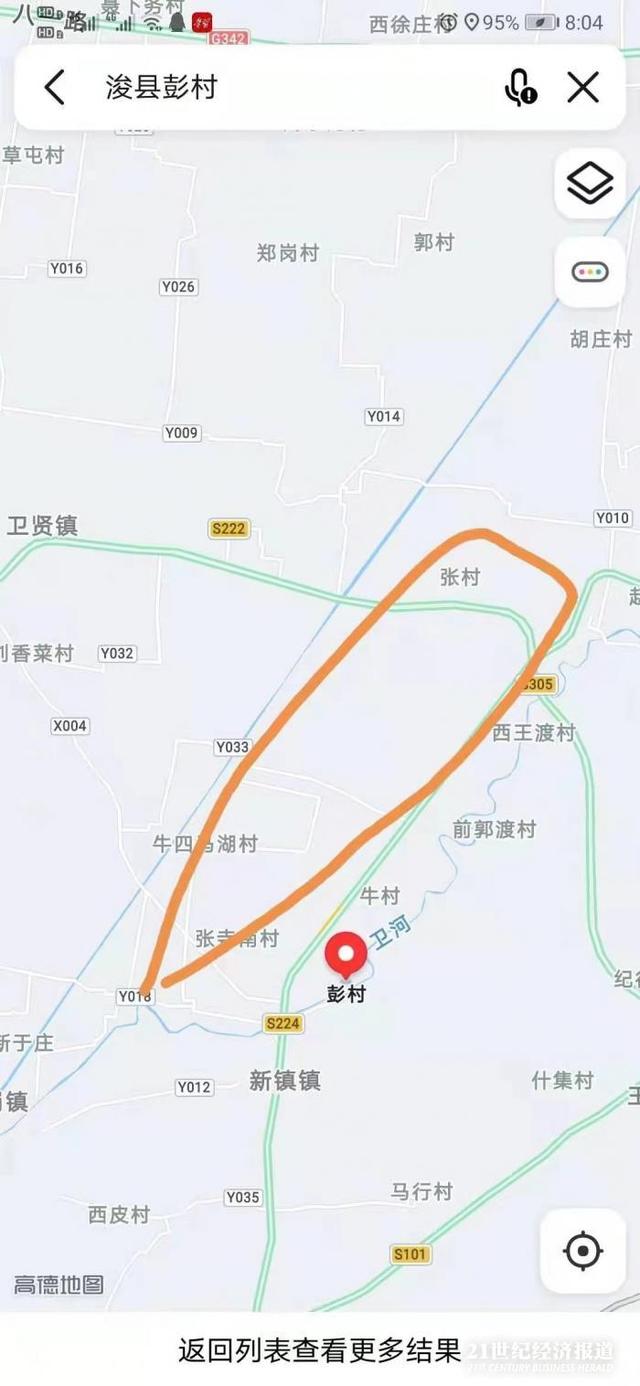жҺҘдёӢжқҘ пјҢ е°ҶзЎ¬зј–з ҒдёҖдёӘй—®йўҳ并жЈҖзҙўзӣёе…іж–ҮжЎЈ гҖӮйңҖиҰҒжіЁж„ҸпјҢеҸҜд»Ҙз”ЁдёҖиЎҢд»Јз ҒжЈҖзҙўж–ҮжЎЈпјҡ
my_question = "How do you rotate text on the x-axis of a graph?"# For straightforward similarity searchingsim_docs = vectordb.similarity_search(my_question)# For maximum marginal relevance search retrieving 5 possible chunks and choosing 3 finalistsпјҡmm_docs = vectordb.max_marginal_relevance_search(my_question, k = 3, fetch_k = 5)еҰӮжһңжғіжҹҘзңӢжЈҖзҙўеҲ°зҡ„ж–ҮжЎЈзүҮж®өпјҢеҸҜд»ҘеңЁPythonдёӯжү“еҚ°е®ғ们пјҢеҰӮдёӢжүҖзӨәпјҡ
for doc in mm_docsпјҡ print(doc.page_content)for doc in sim_docsпјҡ print(doc.page_content)жіЁж„Ҹзј©иҝӣжҳҜforеҫӘзҺҜзҡ„дёҖйғЁеҲҶ гҖӮ
иҝҳеҸҜд»ҘдҪҝз”Ёд»ҘдёӢе‘Ҫд»ӨжҹҘзңӢе®ғ们зҡ„е…ғж•°жҚ®пјҡ
for doc in mm_docsпјҡ print(doc.metadata)for docs in sim_docsпјҡ print(docs.metadata)дёҺе…¶д»–еҜ№иұЎдёҖж · пјҢ д№ҹеҸҜд»ҘеңЁRдёӯжҹҘзңӢиҝҷдәӣеҜ№иұЎпјҡ
mm_relevant <- py$mm_docssim_relevant <- py$sim_docsдёҚзЎ®е®ҡдёәд»Җд№ҲеҪ“иҜ·жұӮдёүдёӘж–ҮжЎЈж—¶пјҢжЁЎеһӢжңүж—¶дјҡиҝ”еӣһеӣӣдёӘж–ҮжЎЈпјҢдҪҶиҝҷеә”иҜҘдёҚжҳҜй—®йўҳпјҢйҷӨйқһLLMеңЁйҒҚеҺҶж–Үжң¬д»Ҙз”ҹжҲҗе“Қеә”ж—¶жңүеӨӘеӨҡзҡ„д»ӨзүҢ гҖӮ
жӯҘйӘӨ6пјҡз”ҹжҲҗзӯ”жЎҲзҺ°еңЁжҳҜж—¶еҖҷи®©GPT-3.5иҝҷж ·зҡ„LLMж №жҚ®зӣёе…іж–ҮжЎЈз”ҹжҲҗеҜ№з”ЁжҲ·й—®йўҳзҡ„д№ҰйқўеӣһеӨҚдәҶ гҖӮеҸҜд»ҘдҪҝз”ЁLangChainзҡ„RetrievalQAеҠҹиғҪжқҘе®һзҺ°иҝҷдёҖзӮ№ гҖӮ
е»әи®®йҰ–е…Ҳе°қиҜ•LangChainзҡ„й»ҳи®ӨжЁЎжқҝпјҢиҝҷеҫҲе®№жҳ“е®һзҺ°пјҢйҖҡеёёйҖӮз”ЁдәҺеҺҹеһӢеҲ¶дҪңжҲ–з”ЁжҲ·иҮӘе·ұдҪҝз”Ёпјҡ
# Set up the LLM you want to use, in this example OpenAI's gpt-3.5-turbofrom langchain.chat_models import ChatOpenAIthe_llm = ChatOpenAI(model_name="gpt-3.5-turbo", temperature=0)# Create a chain using the RetrievalQA componentfrom langchain.chains import RetrievalQAqa_chain = RetrievalQA.from_chain_type(the_llm,retriever=vectordb.as_retriever())# Run the chain on the question, and print the resultprint(qa_chain.run(my_question))LLMз»ҷеҮәдәҶд»ҘдёӢеӣһеӨҚпјҡ
To rotate text on the x-axis of a graph, you can use the `theme()` function in ggplot2. Specifically, you can use the `axis.text.x` argument to modify the Appearance of the x-axis text. Here is an exampleпјҡ```Rlibrary(ggplot2)# Create a basic scatter plotp <- ggplot(mtcars, aes(x = mpg, y = wt)) + geom_point()# Rotate x-axis text by 45 degreesp + theme(axis.text.x = element_text(angle = 45, hjust = 1))```In this example, the `angle` argument is set to 45, which rotates the x-axis text by 45 degrees. The `hjust` argument is set to 1, which aligns the text to the right. You can adjust the angle and alignment values to achieve the desired rotation and alignment of the x-axis text.зңӢиө·жқҘжҳҜжӯЈзЎ®зҡ„!
зҺ°еңЁй“ҫе·Із»Ҹи®ҫзҪ®еҘҪдәҶпјҢеҸҜд»Ҙз”ЁдёҖдёӘRи„ҡжң¬з”ЁдёҖдёӘе‘Ҫд»ӨеңЁе…¶д»–й—®йўҳдёҠиҝҗиЎҢе®ғпјҡ
py_run_string('print(qa_chain.run("How can I make a bar chart where the bars are steel blue?"))')д»ҘдёӢжҳҜе®ғ们зҡ„еӣһеә”пјҡ
```Rlibrary(ggplot2)# Create a bar chart with steel blue barsp <- ggplot(mtcars, aes(factor(cyl)))p + geom_bar(fill = "steelblue")```In this example, we use the `fill` aesthetic to specify the color of the bars as "steelblue". You can adjust the color to your preference by changing the color name or using a hexadecimal color code.иҝҷжҳҜдёҖдёӘжҜ”еңЁChatGPT 3.5дёӯжңү时收еҲ°зҡ„зӣёеҗҢй—®йўҳеҸҜиҺ·еҫ—жӣҙеҘҪзҡ„зӯ”жЎҲ гҖӮжңүж—¶е®ғеҸ‘еӣһзҡ„д»Јз Ғе®һйҷ…дёҠ并дёҚиө·дҪңз”Ё гҖӮ
з”ЁжҲ·еҸҜиғҪиҝҳжғізЎ®и®Өзӯ”жЎҲдёҚжҳҜд»ҺдёҖиҲ¬зҡ„ChatGPTзҹҘиҜҶеә“дёӯжҸҗеҸ–зҡ„пјҢиҖҢжҳҜзңҹжӯЈжқҘиҮӘе…¶дёҠдј зҡ„ж–ҮжЎЈ гҖӮдёәдәҶжүҫеҲ°зӯ”жЎҲ пјҢ еҸҜд»Ҙй—®дёҖдәӣдёҺggplot2е®Ңе…Ёж— е…ізҡ„й—®йўҳпјҢиҝҷдәӣй—®йўҳдёҚдјҡеҮәзҺ°еңЁж–ҮжЎЈдёӯпјҡ
py_run_string('print(qa_chain.run("What is the capital of Australia?"))')з”ЁжҲ·еә”иҜҘиҝҷж ·еӣһеӨҚпјҡ
I don't know.еҰӮжһңжӯЈеңЁеҲӣе»әдёҖдёӘеә”з”ЁзЁӢеәҸд»Ҙдҫӣжӣҙе№ҝжіӣзҡ„дҪҝз”Ё пјҢ йӮЈд№Ҳ“жҲ‘дёҚзҹҘйҒ“”еҸҜиғҪжңүзӮ№з®ҖжҙҒ гҖӮеҰӮжһңз”ЁжҲ·жғіе®ҡеҲ¶й»ҳи®ӨжЁЎжқҝпјҢеҸҜд»ҘжҹҘзңӢLangChainж–ҮжЎЈ гҖӮеҰӮжһңз”ЁжҲ·жӯЈеңЁдёәдёҚжӯўиҮӘе·ұжҲ–дёҖдёӘе°ҸеӣўйҳҹеҲӣе»әеә”з”ЁзЁӢеәҸпјҢйӮЈд№ҲдёӘжҖ§еҢ–е“Қеә”жҳҜжңүж„Ҹд№үзҡ„ гҖӮ
жЁЎжқҝи°ғж•ҙжҳҜLangChainеҸҜиғҪж„ҹи§үиҝҮдәҺеӨҚжқӮзҡ„дёҖдёӘйўҶеҹҹ пјҢ е®ғеҸҜиғҪйңҖиҰҒеӨҡиЎҢд»Јз ҒжқҘе®һзҺ°еҜ№жЁЎжқҝзҡ„е°Ҹжӣҙж”№ гҖӮ然иҖҢпјҢдҪҝз”Ёд»»дҪ•еӣәжү§е·ұи§Ғзҡ„жЎҶжһ¶йғҪжҳҜжңүйЈҺйҷ©зҡ„пјҢиҝҷеҸ–еҶідәҺжҜҸдёӘејҖеҸ‘дәәе‘ҳжқҘеҶіе®ҡйЎ№зӣ®зҡ„жҖ»дҪ“收зӣҠжҳҜеҗҰеҖјеҫ—иҝҷж ·зҡ„жҲҗжң¬ гҖӮиҷҪ然е®ғйқһеёёеҸ—ж¬ўиҝҺпјҢдҪҶ并дёҚжҳҜжҜҸдёӘдәәйғҪжҳҜLangChainзҡ„еҝ е®һз”ЁжҲ· гҖӮ
иҝҳеҸҜд»Ҙз”ЁLangChainеҒҡд»Җд№Ҳ?еҲ°зӣ®еүҚдёәжӯў пјҢ еҜ№еә”з”ЁзЁӢеәҸжңҖз®ҖеҚ•зҡ„ж·»еҠ жҳҜеҢ…еҗ«жӣҙеӨҡж–ҮжЎЈ гҖӮLangChainжңүдёҖдёӘDirectoryLoaderжқҘз®ҖеҢ–иҝҷдёӘиҝҮзЁӢ гҖӮеҰӮжһңз”ЁжҲ·жӯЈеңЁи·ЁеӨҡдёӘж–ҮжЎЈиҝӣиЎҢжҗңзҙўпјҢеҸҜиғҪеёҢжңӣзҹҘйҒ“е“Әдәӣж–ҮжЎЈз”ЁдәҺз”ҹжҲҗе“Қеә” гҖӮеҸҜд»Ҙз»ҷRetrievalQAж·»еҠ return_source_documents=TrueеҸӮж•°пјҢеҰӮдёӢжүҖзӨәпјҡ
qa_chain = RetrievalQA.from_chain_type(the_llm,retriever=vectordb.as_retriever(), return_source_documents=True) my_result = qa_chain({"query"пјҡ my_question})print(my_result['result'])
жҺЁиҚҗйҳ…иҜ»
- еҰӮдҪ•ж”¶йӣҶе’ҢеҮҶеӨҮAIжЁЎеһӢзҡ„и®ӯз»ғж•°жҚ®
- иҖіжңәжҸ’иҝӣз”өи„‘жЈҖжөӢеҲ°дәҶпјҢдҪҶжҳҜйәҰе…ӢйЈҺжІЎеЈ°йҹіпјҢеә”иҜҘеҰӮдҪ•и§ЈеҶіпјҹ
- еҰӮдҪ•иЎҘдәӨе…»иҖҒдҝқйҷ©еңЁжүӢжңәдёҠж“ҚдҪң еҰӮдҪ•иЎҘдәӨе…»иҖҒдҝқйҷ©
- дәҶи§ЈжүӢжңәе®ҡдҪҚеҠҹиғҪпјҢеҰӮдҪ•дёҚз”ЁеҜ№ж–№еҗҢж„ҸжҹҘеҲ°еҜ№ж–№дҪҚзҪ®
- ж–°з ”з©¶иӯҰзӨәпјҡиҝҮеәҰдҪҝз”ЁжүӢжңәдјҡйҷҚдҪҺеӨ§и„‘и®ӨзҹҘеҠҹиғҪ
- йІңиҠұеҰӮдҪ•дҝқйІң иҠұжіҘйІңиҠұеҰӮдҪ•дҝқйІң
- wordиғҪе’Ӣзҡ„иҪ¬жҚўдёәpdfпјҢеҰӮдҪ•е°ҶwordиҪ¬жҚўдёәPDF
- еӨ№жқҝжңЁжқҗеҰӮдҪ•йҖүжӢ© еӨ№жқҝдёҖиҲ¬з”Ёд»Җд№ҲжңЁеӨҙ
- еҰӮдҪ•жҢ‘йҖүз §жқҝ еҰӮдҪ•жҢ‘йҖүз §жқҝжқҗиҙЁ
- з”өи„‘дёҠеҰӮдҪ•жү“ејҖpdfж–Үд»¶ж јејҸ
















